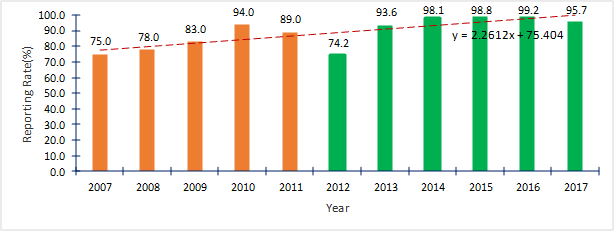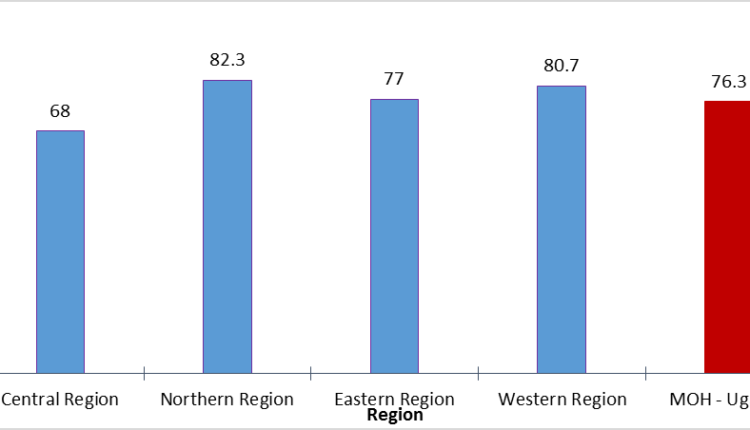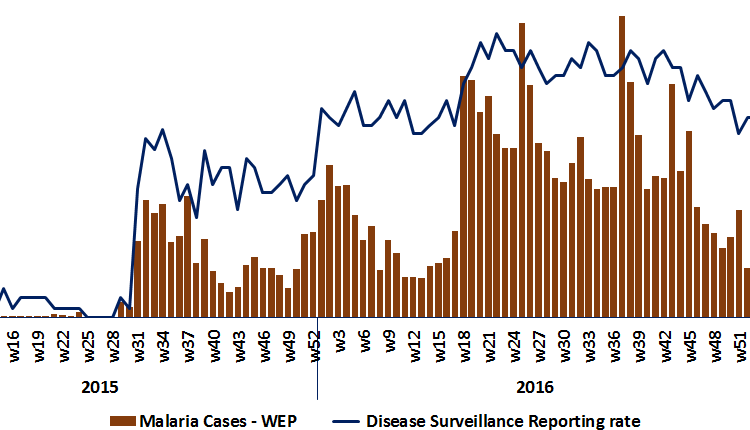Improvement in reporting and monitoring of Public Health Events following introduction of electronic-based surveillance systems
Authors: D.N Opio1, B. Kwesiga1, A. R. Ario1 J. Kissa2, E. Mukoyo2; Affiliations: 1Public Health Fellowship Program-Field Epidemiology 2MoH-Division of Health Information
Summary
Electronic-based surveillance systems offer a novel and developing means of detecting and monitor- ing conditions of public health concern, including emerging infectious diseases. We have discussed and demonstrated the improvement in reporting rates of notifiable diseases in Uganda after adopting and scaling up electronic systems (mTrac and DHIS2) to most health facilities in Uganda. We have also documented practical challenges experienced during the implementation of these surveillance systems and recommended appropriate solutions at all levels of health service delivery.
Introduction
Emerging and re-emerging epidemics continue to pose tremendous threats, based on report- ed cases of severe acute respiratory syndrome (SARS), human influenza caused by a new subtype, Wild Polio Virus, Ebola, Cholera, anthrax or small pox, avian flu, among others. This increase in emerging infectious diseases has led to calls for new technologies and approaches for detection, tracking, reporting, and response. Electronic-based surveillance systems offer a novel and developing means of monitoring conditions of public health concern, including emerging infectious diseases. Electronic-based surveillance systems have good similarity with traditional surveillance approaches. Additionally, Electronic-based approaches are logistically and economically appealing. However, they do not have the capacity to replace traditional surveillance systems; they should not be viewed as an alternative, but rather an extension.
Traditional Versus Electronic Surveillance Systems
Traditional passive surveillance systems typically rely on data submitted to the relevant public health authority by various healthcare providers. This process is often expensive and inefficient, as substantial delays between an event and notifications are common, resulting in an incomplete account of disease emergence. Such limitations of traditional surveillance systems are a shared concern worldwide. The electronic system has revolutionized efficient health-related communication and epidemic intelligence. The increased frequency of electronic system use for acquiring health information has contributed to the rise of web-based early detection systems for infectious diseases through various methodologies.
The performance of Surveillance Systems in Uganda
Uganda has continued to strengthen and improve her capability to perform early detection and rapid reporting, analysis, and interpretation of infectious disease/health events using electronic information systems. These systems enable health workers to collect, report, and analyze in real time public health threats.
Between 2000 and 2010, the Surveillance System in Uganda continued to rely on paper-based forms that were used to collect data at community and health facility levels. These forms were summarized by the health workers and dispatched to the District Health Office and then submitted to MoH using various means including: e-mail, phone text messaging (SMS), faxing, and physical delivery.
From 2010 up to date Uganda has adopt- ed several electronic health surveillance systems such as mTrac (Mobile tracking of Health Services), DHIS2 (District Health Information Software2, OpenMRS (Open electronic Medical Records System) among others. In DHIS2, aggregate data is collected from the Health Facility (HF) and the report is submitted manually to the District Biostatistician for further entry, submission and analysis to MoH.
In mTrac system, surveillance data on priority Diseases, Conditions and events such cholera, Maternal Death, Medicine Stock balances are collected at the HF using registers, summarized onto the reporting forms and entered as SMS using a mobile phone. Data is then sent to the District Biostatistician on 6767, the district is supposed to validate, clean and approve the data for submission to the MoH. Health services within the community are reported through toll free SMS anonymous hotline cod- ed as 8200. OpenMRS system is based at the HF, it captures data on individual HIV patients on care.
Improvement in reporting rates after adoption of Electronic Surveillance Systems
The scale up of these systems have improved monthly reporting rates (RR) from less 75% in FY 2007/8 to about 99.2% in 2016 (Figure1)
Fig 1: Monthly Outpatient Reporting Rate (number reported/expected) before and after DHIS2

The Northern Region had the highest reporting rates (RR=82.3%), followed by Western (RR=80.7%) and least is Central Region (RR<70%) by Week 7 of March 2017
Fig2: Reporting rates by Region Early Notification of Malaria Outbreaks using mTrac System in Pader District

During the year 2015, Pader district reported low Malaria cases because only about 10% of the HFs had reported, this implies that a lot of malaria cases were missed out during that period. However, after massive scale up of mTrac and IDSR training by the Ministry of Health, the district improved its reporting rates to about 70% between from weeks 31 of 2015 to week 21 of the year 2016 hence detecting most of malaria outbreaks (Figure3).
Fig 3:Weekly Malaria cases in Pader district Vs Reporting Rates; 2015-2017

Electronic Surveillance Systems Challenges
These systems especially mTrac and DHIS2 are so beneficial in the provision of health services. However, lessons learnt during the implementation showed a lot of challenges at various levels of health services delivery.
Some of these include:
training and support supervision, Remote areas – Limited Access to power to charge phones, staff attrition and transfers, absenteeism, inconsistent and inaccurate data recorded and transmitted. Mobile Phone is too mobile, some health workers report cooked data out of the HF, inadequate reporting tools (Registers, Reporting forms, case investigation forms, Cards/tally sheets and Box files/cartridges/shelves), some community members do not know anonymous hotline.
Conclusions and Recommendations
Timely detection and reporting of disease outbreaks and other health events can be improved by strengthening the electronic information systems. Reporting of health events from the HF to district and MoH have improved after the country adopted electronic surveillance systems. Most of the challenges hindering the sustainability of these systems are at the user level (Health facility and community).
MoH should continue strengthening the capacity of the end users in terms of disseminating new changes and guidelines on the systems, providing reporting tools and transport means, as well as providing fixed phones at the HF for reporting The district leadership should integrate the sustainability of these systems in their plan, lobby for services from key stakeholders such as Telecom and power companies to be provided in areas where they don’t exist, Health workers and community leaders should continue using the existing systems to report health events in their areas as well as any other.

